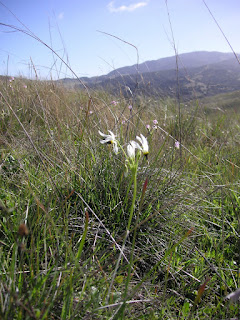


Fort Ord has become one of my favorite places to hike. It can be very green this time of year through to June. After a very wet December, we haven't had much rain and it's been unseasonably warm (77 °F this day). I expected to see more water in the vernal pool. There are still 3-4 months of rainy season left.
I have two location labels for Fort Ord BLM lands (Creekside entrance and InterGarrison entrance), but I've combined the two with others for the Fort Ord habitat - all label. Eventually, when all the munitions are removed, the Fort Ord BLM lands will include about 15,000 acres.
I have two location labels for Fort Ord BLM lands (Creekside entrance and InterGarrison entrance), but I've combined the two with others for the Fort Ord habitat - all label. Eventually, when all the munitions are removed, the Fort Ord BLM lands will include about 15,000 acres.

















